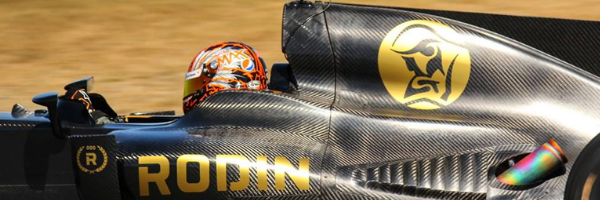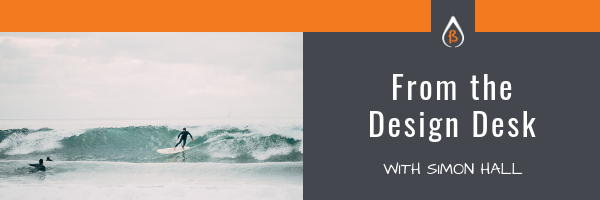Welcome to our first newsletter for 2019. The year is off to a flying start. We have 25 engineers now working across the country on some really neat projects for great clients. Marine, aviation, food processing, agriculture … once again, we have multiple industries covered by our team of extraordinary engineers.
Many people are surprised when we explain the service that we offer here at Caliber: mechanical design engineers when you need them, working on YOUR site. This makes the world of difference: close communications, fresh ideas, inclusion in daily interactions. This means our Caliber engineers know our client’s business, processes, and systems inside out—so they can deliver results and clients see a return on their investment.
Don’t hesitate to drop us a line if you have a project you’d like some help with.
WISH YOU HAD AN EXTRA PAIR OF HANDS?
Fusion is a robot that can be worn like a backpack and gives the wearer the use of two remotely controlled arms. The robt’s eyes are cameras that capture and stream live feedback to the operator.
The operator can be anywhere in the world, wearing an Oculus Rift virtual reality headset and controlling the robot’s limbs via an app. “By sharing the wearer’s point of view the operator can assess the other person’s motion and guide them—holding up their arms and moving them around when necessary.”
The Fusion robot is designed to help people who work remotely collaborate more effectively.
NAVIGATING THE CIRCULAR ECONOMY
The Circular Economy is business model that helps business manage its resources to achieve growth without environmental degradation.
Going Circular means when you produce a product you need to design it with the end in mind. How will your product effect the world?
Research shows Auckland could be $8.8 billion better off in 2030 if the city makes the transition to a circular economy.
It is our collective responsibility to create products sustainably and leave little waste. Find out more in this Radio New Zealand interview.
TALKING ABOUT A REVOLUTION
Industrial revolutions share a common theme: the invention of a specific technology that changed society fundamentally.
Experts say that the Fourth Industrial Revolution is upon us. “The gap between the digital, physical and biological worlds is shrinking, and technology is changing faster than ever.”
Get this: “It took 75 years for 100 million people to get access to the telephone; the gaming app ‘Pokemon Go’ hooked that many users in less than one month in 2016.” Mind boggling.
This article includes interesting videos about the revolution and the impact of robots.

Our Christchurch Office has Moved
We’re now located at 41 Birmingham Drive, Middleton, Christchurch 8024. The location is perfect—light, warm, and close to many of our clients.

SpaceX Use of Simulation
You may have heard of SpaceX’s recent developments in their methane powered Raptor engine—the engine they hope will ultimately take them to Mars. This is a fascinating development and one which will be incredible to watch over the coming years.
The reason I bring this up is the eye watering pace with which SpaceX are managing to develop and launch their technology. Since their first launch to reach orbit in late 2008, they’ve continued to make a number of innovations which are firsts in the industry (landing multiple first stages, relaunching a used rocket stage and heck, even launching a car into space which, given its current location, has now achieved a fuel economy of around 1630km/L).
The only way SpaceX have managed to achieve this rate of development is in part, they admit, due to their simulation capabilities. Rocket engines are immensely complex beasts and the traditional method of development has involved creating a large number of prototypes which is a slow and costly process and can ultimately still only give limited insight.
In this fascinating and detailed video, some of the analysts from SpaceX give a break down of how they’ve managed to leverage simulation to speed up their development process. In fact, they’ve seen such value in it that they’ve written custom code with the data compression and architecture to run on a single GPU—this means their development cycle is incredibly short, enabling them to test multiple ideas in parallel for a fraction of the cost of physical prototypes.
Methane/LOx engines have been traditionally fraught with issues (combustion instability is a major component) but with simulation, they’re able to trial multiple injector configurations and simulate the combustion process from the macro-scale, all the way down to the nano-scale (where they’re simulating at the molecular level all 325 combustion reactions that simultaneously are taking place).

Not only is this work cutting edge, it’s leading to some incredible images—a collision between science and art?
Article by | Ashley Brittenden, Analysis Manager

Supercars Made in Waiau
Did you know we have a state-of-the-art supercar designer and manufacturer in North Canterbury?
Mel, our Marketing Coordinator, was lucky enough to go to the Historic Touring Cars of New Zealand motorsport dinner, prior to the Skope Classic earlier in the month.
At the front of the room, a Rodin FZero supercar was on display and David Dicker, the man behind the Rodin supercar business, was a guest speaker. Wildly eccentric and insanely clever, David was entertaining. His obvious can-do will-do attitude, astute business acumen, and life long love of cars have enabled him to setup his epic operation in Waiau.
David made is money in Australia through an IT distribution business he setup in the 1980s—back when microcomputers were a new thing! He was lured to New Zealand in 1999 to fulfill his dream of building fast cars because of New Zealand’s vibrant car scene. He felt the car culture had been destroyed in Australia due to a “mindless focus on speed with the attendant draconian fines and disqualifications”. Australia’s loss was New Zealand’s gain.
In 2005 he found the perfect piece of land and purchased 1400 acres in North Canterbury. Over the coming years he developed 6 kms of test tracks, large workshops, a pit garage, and training centre. The operation is 100% self sufficient.
“This do it ourselves attitude not only allows us to control every aspect of business, from design and testing, through to manufacture, construction and sales, but also ensures we maintain exceptionally high levels of build quality, unparalleled customer service and satisfaction with every car sold. This is the Rodin Way.”
The Rodin FZero is a light weight, single seater track car, made predominantly out of carbon fibre. The titanium wheels are printed inhouse! The goal is for the Rodin FZero to be the world’s fastest track car.
Greg Murphy set an unofficial track record of 1:15.501 at the Skope Classic at Mike Pero Motorsport Park, Ruapuna on February 3rd. There’s some video footage here.
I couldn’t help looking at the two young engineers David had sitting at his table, that also appear in this Sky Sport video about Rodin cars (see below), and think what a dream job that must be for those young men. Who would have thought that you could get a job making race cars in New Zealand where you can design, test, prototype, and manufacture all the parts on site … and then test drive the car on the racetrack outside. Another example of world class innovation coming out of Aotearoa.
Article by | Mel Opie, Marketing Coordinator
Sky Sport feature on the Rodin supercar operation in Waiau, North Canterbury.

Staying Current
To use a surfing analogy (not at all because I’m writing this after a trip to Tawharanui!) staying in front of the wave is important, otherwise you’ll miss it or it will overtake you. This is also true of the knowledge wave. We’ve seen a lot of disruptive tech in the last few years turn established industries on their heads. When was the last time you used a paper map? If you’d been eyeing up a Martin Jetpack, did you withdraw your interest in favour of a remotely operated quadcopter? Consider also how services such as Uber and Lime have altered urban transport behaviours and expectations.
Those waves are all around us, and you can be assured that your team of Caliber Design engineers are paddling to stay ahead of them. We engage in internal and external training, certification of proficiency in CAD packages, and we set ourselves targets for CPD—Continuous Professional Development. We take part in the activities of professional engineering societies and technical groups to keep abreast of the latest developments, exemplary projects and emerging trends in the engineering industry.
Article by | Simon Hall, Design Manager
|
We’re pleased to be back at SouthMach again this year. We’ll be showcasing some of the unique and innovative projects we’ve been working on and presenting about The Value of Simulation—test driving your design before it hits production.
|

Shortage of resources? Looming deadline? Skill gap that needs to be filled?
We have talented engineers with experience and innovative ideas, ready to help. Just drop us a line!
Wayne Le Sueur
021 140 4944
wayne.lesueur@caliberdesign.co.nz
Andrew Jackson
021 774 286
andrew.jackson@caliberdesign.co.nz



